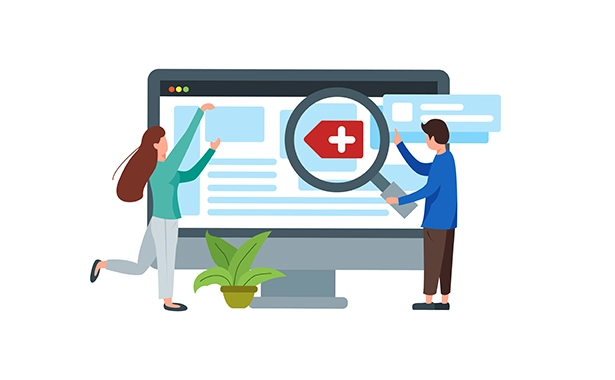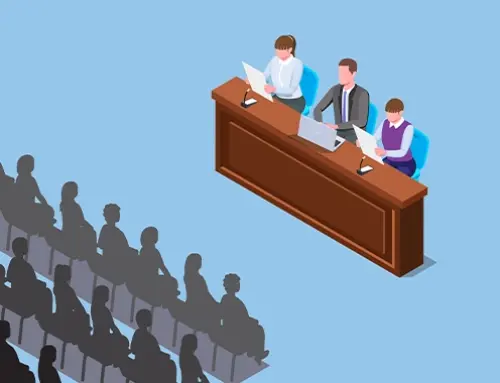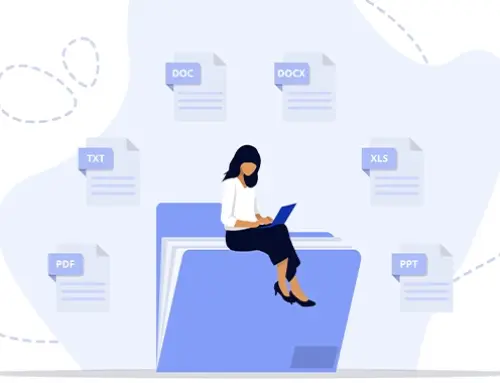Contents
This guide provides an overview of SEO and paid search strategies tailored for personal injury law firms. By focusing on high-intent personal injury keywords, firms can improve their visibility in search results, attract qualified leads, and increase client acquisition. Whether your goal is to improve organic rankings or reduce wasted spend in PPC campaigns, this resource outlines the tactics, tools, and metrics required for a results-driven approach.
You will learn how to align keyword strategy with user intent, evaluate performance using industry benchmarks, and optimize both content and technical elements to support long-term growth. This article is designed to help legal professionals make informed marketing decisions that lead to measurable outcomes.
What This Guide Covers:
- The key differences between informational, commercial, and transactional keyword intent
- A curated list of 50 personal injury keywords with monthly search volume, difficulty scores, and CPC benchmarks
- Strategies for balancing SEO and PPC efforts based on budget, competition, and conversion potential
- Essential keyword research tools and metrics for evaluating campaign performance
- Technical SEO improvements that support visibility, speed, and lead conversion
Understanding Personal Injury Keywords: Types and Intent
Personal injury keywords are specific terms individuals use when seeking legal assistance for injury claims. These phrases, such as “personal injury lawyer,” “car accident attorney,” or “slip and fall legal help,” are crucial for increasing a law firm’s visibility and attracting highly targeted traffic. This targeted traffic directly translates into higher-quality leads, which are indispensable for a practice operating on a contingency fee model, where a consistent pipeline of new clients is vital.
Keyword Intent: The Foundation of Strategy
Understanding the user’s intent behind a search query is foundational to effective keyword strategy. Search queries generally fall into three categories:
- Informational Intent: Users seek answers or general information. Examples include “what to do after a car accident” or “types of compensation for slip and fall injuries”.1 Content addressing these queries builds authority and trust, which is particularly important for legal topics falling under Google’s “Your Money or Your Life” (YMYL) content standards.2 Providing detailed, well-researched information establishes a firm’s expertise, a critical component for organic ranking.3
- Commercial Intent: Users are researching services or solutions before making a hiring decision. Terms like “best personal injury lawyer” or “personal injury law firm” indicate this stage.3 These keywords suggest a strong potential for conversion, as the user is actively evaluating options.
- Transactional Intent: Users are ready to take immediate action and hire a service. Phrases such as “personal injury lawyer near me” or “car accident attorney in Miami” signal this readiness.3 These are high-value terms, often location-specific, designed to drive immediate contact and client intake.4
Leveraging Long-Tail and Local Keywords
Strategic keyword selection extends beyond broad terms to include more specific variations:
- Long-Tail Keywords: These are specific phrases, typically four or more words, that reflect precise user intent.4 Examples include “motorcycle accident attorney Nashville,” “semi-truck crash lawyer Wilkes-Barre,” or “workers comp attorney for repetitive strain injuries”.2 While they generally have lower individual search volumes, long-tail keywords often boast higher conversion rates and face less competition than broader, generic phrases. Targeting these terms enables a firm to connect with highly qualified prospects who are actively seeking specific legal solutions.
- Local Keywords: Incorporating geographic modifiers (e.g., “personal injury lawyer near me,” “car accident attorney in Miami”) is critical for personal injury firms. Local SEO has a significant influence on Google’s map pack, which appears in 93% of local searches and captures approximately 44% of user clicks.2 This direct visibility in local search results is a powerful driver of new leads, making location-specific keywords an indispensable component of any personal injury digital marketing strategy.4
The differing user intents for keywords necessitate a varied content approach. Informational queries are best served by blog posts or comprehensive guides, while transactional queries require optimized service pages or landing pages that provide a seamless user experience. A law firm’s marketing funnel for personal injury cases relies on capturing users at every stage of their legal journey, from initial research to the point of immediate need. This way requires a nuanced understanding of keyword intent to deliver the right content at the right time. By mapping keyword clusters to specific practice area pages and supporting them with relevant FAQs and local resources, firms can more effectively pre-qualify leads. This targeted approach enhances the efficiency of the intake process and reduces wasted ad spending on irrelevant clicks, thereby directly improving the firm’s revenue potential.
50 Essential Personal Injury Keywords for SEO & PPC
This table provides a comprehensive list of personal injury keywords, detailing their monthly search volume, keyword difficulty, user intent, and average Cost Per Click (CPC). This data empowers law firms to make informed decisions for both their SEO and PPC strategies, prioritizing terms that align with their specific marketing goals and budget constraints.
Keyword |
Monthly Search Volume |
Keyword Difficulty (KD) |
Intent |
Avg. CPC ($) |
Personal injury attorney |
110,000 |
62 |
Commercial |
170-250+ |
Car accident lawyer |
90,500 |
65 |
Commercial |
150-250+ |
Personal injury lawyer |
90,500 |
86 |
Commercial |
150-250+ |
Truck accident lawyer |
60,500 |
62 |
Commercial |
150-250+ |
Motorcycle accident attorney |
33,100 |
50 |
Commercial |
106.66 |
Personal injury lawyer near me |
27,100 |
41 |
Transactional |
80.68 |
Slip and fall lawyer |
27,100 |
46 |
Commercial |
100-200 |
Wrongful death lawyer |
27,100 |
50 |
Commercial |
150-250+ |
Medical malpractice attorney |
22,200 |
50 |
Commercial |
150-250+ |
Injury attorney near me |
18,100 |
50 |
Transactional |
80-150 |
Personal injury law firm |
12,100 |
78 |
Commercial |
170-250+ |
Best personal injury lawyer |
8,100 |
62 |
Commercial |
150-250+ |
Personal injury settlement |
6,600 |
53 |
Informational |
50-100 |
Personal injury law |
4,400 |
91 |
Informational |
50-100 |
SEO for personal injury |
4,400 |
75 |
Informational |
50-100 |
| Construction accident attorney | 3,600 | 38 | Commercial | 100-200 |
| Personal injury claim | 2,900 | 72 | Informational | 50-100 |
| Personal injury lawsuit | 2,900 | 38 | Informational | 50-100 |
| Workplace injury lawyer | 2,900 | 28 | Commercial | 80-150 |
| Accident injury lawyer | 1,900 | 71 | Commercial | 150-250+ |
| Personal injury case | 1,000 | 49 | Informational | 50-100 |
| Personal injury insurance | 720 | 55 | Informational | 50-100 |
| Personal injury lawyer cost | 720 | 50 | Informational | 50-100 |
| Personal injury lawyer fees | 720 | 27 | Informational | 50-100 |
| Personal injury litigation | 720 | 58 | Informational | 50-100 |
| Personal injury defense lawyer | 720 | 32 | Commercial | 50-100 |
| Personal injury compensation | 480 | 43 | Informational | 50-100 |
| Dog bite attorney | 6,400 | Easy | Commercial | 70-150 |
| Bicycle accident lawyer | 8,700 | Medium | Commercial | 70-150 |
| Bus accident lawyer | 2,300 | Easy | Commercial | 70-150 |
| Premises liability attorney | 1,900 | Easy | Commercial | 70-150 |
| Workers comp attorney | 2,900 | Medium | Commercial | 70-150 |
| Car crash lawyer | 3,000 | Medium | Commercial | 150-250+ |
| Auto accident lawyer | 13,000 | Medium | Commercial | 150-250+ |
| Car accident attorneys | 10,000 | Medium | Commercial | 150-250+ |
| Auto accident attorney | 11,000 | Medium | Commercial | 150-250+ |
| Malpractice attorney | 4,000 | Medium | Commercial | 150-250+ |
| Truck accident | 3,700 | Medium | Informational | 50-100 |
| Insurance lawyer | 3,600 | Medium | Commercial | 70-150 |
| Best personal injury attorney | 3,200 | Medium | Commercial | 150-250+ |
| Car accident lawyers near me | 3,200 | Easy | Transactional | 80-150 |
| Auto accident | 2,900 | Hard | Informational | 50-100 |
| Construction accident attorney | 2,600 | Easy | Commercial | 100-200 |
| Auto accident lawyer near me | 2,400 | Medium | Transactional | 80-150 |
| Car accident law firm | 2,200 | Medium | Commercial | 150-250+ |
| Best auto accident lawyer | 2,100 | Medium | Commercial | 150-250+ |
| Accident injury lawyers | 1,600 | Medium | Commercial | 150-250+ |
| Work injury attorney | 1,500 | Medium | Commercial | 70-150 |
| Legal help for severe dog bite rehabilitation costs | Long-tail | Low | Transactional | 50-100 |
| Truck accident lawyer for vehicle clash injuries | Long-tail | Low | Transactional | 50-100 |
| Medical malpractice attorney for birth injury cases | Long-tail | Low | Transactional | 50-100 |
| Lawyer for rear-end collision disk herniation claims | Long-tail | Low | Transactional | 50-100 |
Note: Monthly Search Volume and Keyword Difficulty (KD) are approximate values and can vary by tool and region. CPC values for long-tail keywords are estimates based on general personal injury PPC costs, as specific data for highly granular terms is less commonly published.
Essential Keyword Research Metrics and Tools
Effective keyword research for personal injury law firms transcends simple keyword lists. It demands a data-driven approach, leveraging specific metrics and specialized tools to identify viable opportunities.
Key Metrics for Informed Decisions
- Search Volume: This metric represents the average number of times a specific keyword is searched by users for each month. A higher volume suggests greater potential for website traffic and visibility.
- Keyword Difficulty (KD): KD is a score estimating the challenge of ranking in the top 10 search results for a particular keyword. A higher KD score signifies more competition, requiring greater authority and content investment to achieve a high ranking.
- Competitive Density: This metric quantifies the level of competition among advertisers bidding on a keyword within their PPC campaigns, typically on a scale of 0 to 1.00.9. A high score, such as 0.80 or above, indicates fierce competition but often signals strong conversion potential.
- Cost Per Click (CPC): CPC represents the average price advertisers pay for a user’s click on an ad triggered by a specific keyword in Google Ads. This cost varies significantly by industry, geographic location, and the specific keyword.
- Search Intent: As discussed, this refers to the underlying purpose or reason behind a search query (informational, commercial, or transactional). Aligning content and ad copy with user intent is paramount for effective engagement.
Indispensable Keyword Research Tools
Several tools provide the data necessary for a robust keyword strategy:
- Google Keyword Planner: A free tool from Google, it assists in finding relevant keywords, estimating search volume, and assessing competition.
- SEMrush & Ahrefs: These comprehensive digital marketing platforms offer in-depth keyword research, difficulty analysis, competitive intelligence, and backlink analysis.2 They provide a complete keyword overview, including difficulty scores, competition metrics, search intent, and CPC.
- SpyFu: This tool specializes in competitive intelligence, particularly for PPC. It can reveal competitors’ paid keywords and ad copy, aiding in the strategic development of ad campaigns.
- Google Search Console: This free Google tool provides direct insights into what leads visitors to a firm’s site, including keyword performance and technical issues.
Simply observing individual keyword metrics is insufficient for effective digital marketing. These metrics are interdependent and must be considered collectively. For example, a keyword with high search volume and high Keyword Difficulty might be too challenging for a small-to-mid-size firm to rank organically, especially if they are starting their SEO efforts. However, if the same keyword also has a high CPC, it suggests strong commercial intent, making it a viable target for a highly focused PPC campaign despite the cost. Conversely, selecting keywords based solely on low CPC might seem budget-friendly, but it could lead to poor conversion rates if the user intent is not aligned with the firm’s services.
The common pitfall for law firms is using outdated tactics or applying a generic SEO plan to every client. A more effective approach requires a nuanced, data-driven strategy that incorporates all available metrics. Firms must prioritize keywords that offer a realistic chance of ranking organically, striking a balance between keyword difficulty (KD) and search volume for long-term growth. Simultaneously, they should target keywords with high conversion potential, striking a balance between cost per click (CPC) and intent to drive immediate lead generation through PPC. This strategic allocation of effort and budget, informed by a holistic view of keyword viability, directly improves the firm’s operational efficiency and revenue generation.
PPC Keyword Strategies, Benchmarks, and ROI
Pay-per-click (PPC) advertising offers immediate visibility and targeted traffic, making it a powerful tool for personal injury law firms. However, its high cost necessitates a highly strategic approach to maximize Return on Investment (ROI).
The High Stakes of Personal Injury PPC
Personal injury is consistently one of the most expensive practice areas for PPC advertising. Keywords like “car accident lawyer” can command bids ranging from $150 to $500 per click, with the average CPC for personal injury terms often falling between $70 and $250+.This elevated cost stems from fierce competition and the substantial potential value of a single personal injury case, which can exceed $1 million. Despite the high expenditure, law firms that utilize online search ads are hired 25% faster than those that do not. Paid search accounts for a significant portion of legal industry traffic, generating 58% of all traffic in the legal space. Furthermore, users who click on paid ads often demonstrate higher immediate intent, indicating they are closer to making a hiring decision.
Strategic PPC Implementation to Maximize ROI
To ensure PPC campaigns are profitable, firms must implement several strategic measures:
- Targeting High-Intent Keywords: Prioritize long-tail keywords that indicate a strong desire for legal services, such as “best personal injury lawyer for motorcycle accidents.” These specific phrases generally convert better and are less expensive than broad, generic terms. Additionally, focus on purchase intent keywords like “pricing,” “payment plan,” or “consultation,” which directly signal a user’s readiness to engage.
- Negative Keywords: Crucial for preventing wasted ad spend, negative keywords block irrelevant searches from triggering ads. For example, a firm representing plaintiffs should exclude “personal injury defense lawyer” to avoid clicks from individuals seeking defense counsel.
- Match Types: Employ exact match and phrase match for high-intent keywords to precisely control which searches trigger ads, thereby tightening targeting and reducing irrelevant impressions.
- Geographic Targeting: Limit ad reach to specific geographic areas, such as a 5-mile radius around the firm’s office. Geographic Targeting is particularly critical for local personal injury firms, as it ensures that ads reach potential clients within their service area.
- Ad Scheduling: Optimize ad delivery by scheduling ads to run during times when the target audience is most likely to search for legal help and convert.
- Landing Page Optimization: Direct ad clicks to highly optimized landing pages that feature clear calls-to-action (CTAs), are mobile-friendly, and include streamlined contact forms for a seamless user experience. A poor landing page experience can lead to high bounce rates and wasted ad spending.
- Call-Only Ads & Local Services Ads (LSAs): Leverage call-only ads and LSAs to facilitate immediate phone contact, as over 70% of potential clients contact lawyers by phone.6 LSAs can be highly effective, with costs ranging from $150 to $300 per lead for personal injury cases.
- Quality Score: Google’s Quality Score, influenced by ad relevance, expected click-through rate, and landing page experience, directly impacts CPC. A higher Quality Score leads to a lower cost per click, making campaigns more efficient.
PPC Performance Benchmarks
Understanding industry benchmarks is vital for evaluating campaign effectiveness and setting realistic expectations:
- Average Click-Through Rate (CTR): For legal services, the average CTR ranges from approximately 4.76% to 5.30%.
- Conversion Rates: Typically, conversion rates for personal injury PPC campaigns range from 5% to 7%, with highly optimized campaigns achieving rates of 10% or higher. Paid search ads for legal services achieve an average conversion rate of 5.64%.15
- Return on Investment (ROI): While the average ROI for PPC campaigns is approximately 2:1, well-optimized strategies can achieve a significantly higher ROI, ranging from 4:1 to 10:1 or higher.
- Cost Per Lead (CPL): For LSAs in the personal injury sector, the CPL typically falls between $150 and $300.
The substantial cost of personal injury PPC, while initially daunting, is often justified by the potential for significant ROI from a single successful case.5 However, many law firms report “bleeding money” on PPC campaigns. This problem does not solely stem from the high CPC but from inefficiencies in converting those expensive clicks into qualified leads and signed cases. A high bounce rate for paid search ads, typically around 43.9%, indicates that a substantial portion of clicks do not result in meaningful engagement. This suggests underlying issues with targeting, ad relevance, the landing page experience, or, critically, the firm’s client intake process.
The massive ROI potential of PPC can only be realized if the entire marketing and intake funnel is optimized. This process involves not only meticulous keyword selection (including negative keywords) and rigorous landing page optimization (ensuring mobile-friendliness and clear CTAs) but also, perhaps most importantly, a highly trained and responsive intake team. An intake process that is slow, unprofessional, or fails to qualify leads effectively can render even the most expensive ad clicks worthless. Therefore, successful PPC for personal injury firms is a holistic endeavor that integrates marketing spending with operational efficiency to directly impact revenue.
Technical SEO Foundations for Personal Injury Law Firms
Technical SEO ensures that a law firm’s website is crawlable, indexable, and user-friendly, forming the unseen yet critical bedrock for all other SEO efforts. Without a strong technical foundation, even the most compelling content and targeted keywords will struggle to achieve optimal visibility.
Critical Technical Elements
Technical SEO determines whether your law firm’s site performs in search, converts traffic into leads, and builds client trust. Even the most strategic keyword plan will fail if the site suffers from poor speed, mobile issues, or weak infrastructure. Each of the following components plays a direct role in your firm’s visibility and revenue outcomes.
Website Security (HTTPS)
HTTPS encrypts the data exchanged between your site and its visitors, protecting sensitive client information. For law firms, this is critical for both compliance and credibility. Google has treated HTTPS as a ranking factor since 2014, yet only 44 percent of law firm websites currently have SSL certificates. Without it, users see security warnings that can lead to immediate site abandonment.
Core Web Vitals
Google uses Core Web Vitals to measure real-world page experience. These include:
– Largest Contentful Paint (LCP), which measures loading speed
– Interaction to Next Paint (INP), which measures input responsiveness
– Cumulative Layout Shift (CLS), which measures visual stability
Improving these metrics leads to faster, smoother browsing and increased user engagement. Sites that perform poorly in this area tend to have lower rankings and weaker conversion rates.
Mobile-Friendliness
A site that does not function well on smartphones will lose both traffic and leads. While 74 percent of law firms report having a mobile-friendly site, many do not use mobile-optimized landing pages or ad formats. These gaps increase bounce rates, lower conversions, and raise cost-per-click in paid campaigns.
Schema Markup
Adding structured data, such as LocalBusiness, FAQPage, and Article schema, enables search engines to understand the content of your site better. This allows rich snippets in search results, which can display additional information such as ratings or service areas. Schema improves both visibility and click-through rates in competitive local markets.
XML Sitemaps and Robots.txt
An XML sitemap ensures that search engines can easily find and index all important pages on your site. A properly configured robots.txt file helps prevent the indexing of irrelevant or duplicate content. Together, these tools help focus crawl activity on the pages that matter most for search rankings.
Redirects (301s)
Permanent 301 redirects ensure that when a URL changes, any existing authority and traffic are passed to the new location. This redirection is essential during site migrations or when removing outdated pages. Without redirects, search engines may treat the content as lost, which results in broken links and reduced ranking power.
Technical issues are often invisible to users at first but have real and measurable consequences. Sites that are slow to load, insecure, or poorly optimized for mobile devices tend to have higher bounce rates and lower trust. These problems dilute the effectiveness of even the most precisely targeted personal injury keywords and weaken your personal injury lawyer SEO strategy.
When a potential client encounters a broken page, a browser warning, or a delay in loading, the likely result is abandonment. That abandonment wastes ad budget and leads to missed revenue. Technical SEO is not a background task. It is a core investment that supports your entire digital marketing funnel and protects long-term performance.
Final Thoughts
The long sales cycle inherent in personal injury cases, which can span months or even years, presents a significant challenge to directly measuring immediate ROI. This extended client journey, often involving multiple touchpoints before a conversion, can lead to a perception of “wasted marketing spend” if metrics are not tracked comprehensively. To overcome this, firms must implement interim benchmarks, such as tracking leads that progress beyond the initial consultation stage, and employ cohort analysis to understand how leads acquired in a given period eventually convert over time. Relying solely on immediate conversions will undervalue the compounding effect of SEO and oversimplify the contribution of PPC. The multi-touchpoint nature of client acquisition further necessitates integrated tracking systems (CRM, call tracking, analytics) to accurately attribute leads and map the complete client journey.
For law firms, this means shifting from viewing marketing as a standalone cost center to recognizing it as an integrated revenue driver. This requires investing in robust tracking tools and, equally important, training staff across all departments to understand and utilize the data. Cultivating a data-driven culture, where KPIs are accessible and reviewed regularly, enables continuous refinement and adaptation of marketing strategies. This ensures that the firm’s significant investment in digital marketing, such as the average annual SEO cost of $120,000, translates into measurable and sustainable revenue growth, rather than being perceived as unproductive expenditure.
RunSensible’s personal injury tools help law firms convert more leads by streamlining your workflow and client intake in a single platform.
Eliminate missed follow-ups, unify your data, and respond faster to high-value case inquiries. RunSensible gives you the infrastructure to grow, Book a free demo NOW!
FAQs
1. Which personal injury keywords drive the most traffic?
The highest-traffic personal injury keywords typically relate to common accident types and legal services. According to recent data, the top keywords by monthly search volume in the U.S. include:
- “personal injury lawyer” (~90,500 searches)
- “car accident lawyer” (~74,000 searches)
- “personal injury attorney” (~63,000 searches)
- “truck accident lawyer” (~33,100 searches)
- “motorcycle accident lawyer” (~27,100 searches)
- “medical malpractice lawyer” (~22,000 searches)
- “wrongful death lawyer” (~22,200 searches)
These broad, high-volume keywords are highly competitive but essential for visibility. More niche or long-tail keywords, such as “slip and fall lawyer” or “workers compensation lawyer,” have lower volume but can be easier to rank for and still attract qualified leads.
2. What role do keywords play in PPC for injury law?
Keywords in PPC campaigns are crucial because they determine which search queries trigger your ads. Selecting the right personal injury keywords ensures your ads appear to users actively seeking legal help, thus improving ad relevance and lead quality.
- Keywords with high buying intent (e.g., “best car accident lawyer near me”) attract more qualified prospects likely to convert.
- PPC keyword selection balances search volume and competition to optimize cost efficiency.
- Using a mix of broad, long-tail, and location-specific keywords helps target different user intents and reduces wasted spend.
3. How competitive are personal injury keywords?
Personal injury keywords are generally highly competitive, broad terms like “personal injury lawyer” or “car accident lawyer,” which have high search volumes and keyword difficulty scores labeled as “Hard” or “Medium-Hard.” This means that many established firms bid on or optimize their offerings for these terms.
- Niche or more specific keywords (e.g., “dog bite injury lawyer” or “slip and fall attorney”) tend to have lower competition and keyword difficulty, making them more accessible for smaller firms.
4. What is a reasonable conversion rate for personal injury PPC ads?
Conversion rates in personal injury PPC campaigns vary but tend to be higher than in many other industries due to the high intent of searchers:
- A reasonable conversion rate for car accident or personal injury campaigns is around 20-35% after optimization.
- Initial campaigns start around 10-15%, which is considered mediocre in this niche.
- Workers’ compensation PPC campaigns often have lower conversion rates (7-10%) but can still be profitable due to lower cost per click and high case value.
5. How should a small firm choose which keywords to target?
For small personal injury firms, keyword targeting should focus on:
-
- Balancing search volume and competition: Avoid overly broad, highly competitive keywords that are costly and hard to rank for.
- Targeting long-tail and location-specific keywords: These have lower competition and attract more qualified local clients (e.g., “Miami truck accident attorney”).
- Using keyword research tools (Ahrefs, Google Keyword Planner, SEMrush) to identify relevant keywords with manageable difficulty and good intent.
- Analyzing competitors’ keywords to find gaps or opportunities.
- Leveraging client data and common questions to discover keywords that reflect actual client needs and search behavior
References
- A Guide To SEO for Personal Injury Lawyers In 2025 | Go Fish Digital
https://gofishdigital.com/blog/personal-injury-lawyer-seo/
- SEO for Personal Injury Lawyers Growth in 2025 | Comrade Digital Marketing Agency
https://comradeweb.com/blog/personal-injury-law-firm-seo/
- The Best Personal Injury Keywords for Lawyers
https://localranking.com/blog/personal-injury-keywords
- Breaking Down the Costs of PPC Advertising at Law Firms
https://natlawreview.com/article/how-sign-300-cases-month-ppc-advertising-breaking-down-costs
- 75 Personal Injury Keywords for PPC and SEO
https://rankings.io/blog/personal-injury-keywords
- Legal Search Advertising Benchmarks for 2024 (with Data & Tips) | LocaliQ
https://localiq.com/blog/legal-search-advertising-benchmarks/
- Cost-per-Lead, CTR and Conversion % for Injury Lawyers
https://www.majux.com/ppc-benchmarks-cpl-ctr-conversion-rate-law-firms/
- 75 Personal Injury Keywords for PPC and SEO
https://rankings.io/blog/personal-injury-keywords
Disclaimer: The content provided on this blog is for informational purposes only and does not constitute legal, financial, or professional advice.







